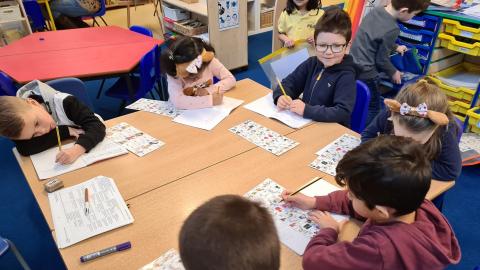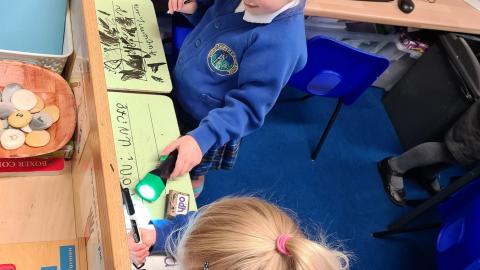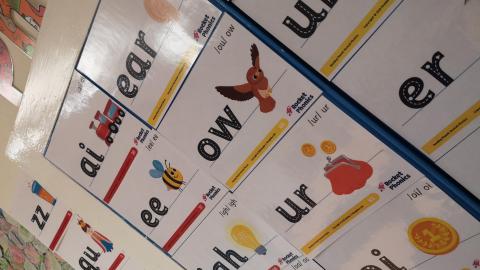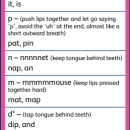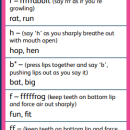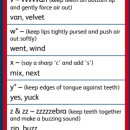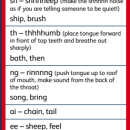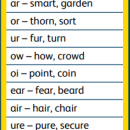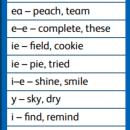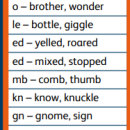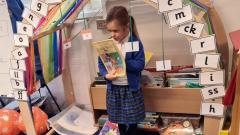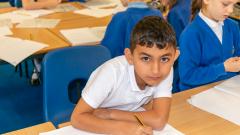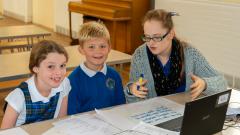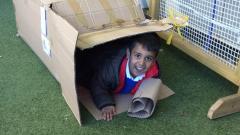Research shows that when phonics is taught in a structured way, starting with the easiest sounds and progressing through to the most complex, it is the most effective way of teaching young children to read. (DfE 2013)
What is phonics?
Phonics supports children to hear, identify and link the sounds that letters make (phonemes) to what the letters look like when written down (graphemes). This helps children to recognise and read words, using knowledge of the sounds to read new or unfamiliar words.
What is Systematic Synthetic Phonics (SSP)?
Systematic Synthetic Phonics is a way of teaching children to read, write and spell. The sounds that children learn are taught in a specific, systematic order (not alphabetically) so that children can begin to build words from these sounds as early as possible.
How do we teach phonics in Christ Church School?
We teach phonics using Rising Stars Rocket Phonics which links directly with our Reading Planet reading scheme. Rocket Phonics is a Department for Education (DfE) validated scheme.
All children in Reception and Key Stage 1 take part in a daily phonics lesson where they learn to recognise, identify, say and read all of the 44 sounds of the English language along with writing and spelling them. They regularly revisit previously taught sounds, learn new sounds and practise applying phonics to their reading, writing and spelling.
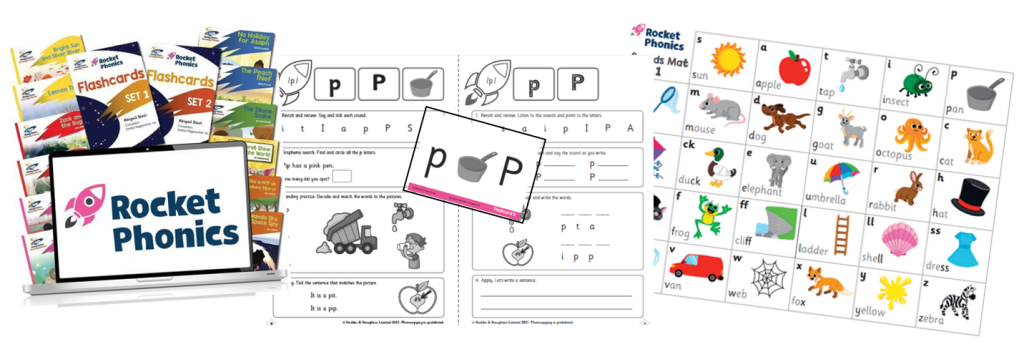
Phonics lessons are taught in year groups rather than class groups. This allows children of the same age to learn new sounds and work through the whole programme together. Some children will require additional support in order to keep pace with the group, or remember what they have learned in previous lessons. These children are identified and take part in practise and consolidation groups. A small number of children, for example those with SEND, may require more personalised or intensive support to revisit and practise sounds introduced earlier in the scheme.
If you have any questions about your child and phonics lessons, please talk to their class teacher who will be happy to answer your questions.
Please click on the pictures and links below for further information.

